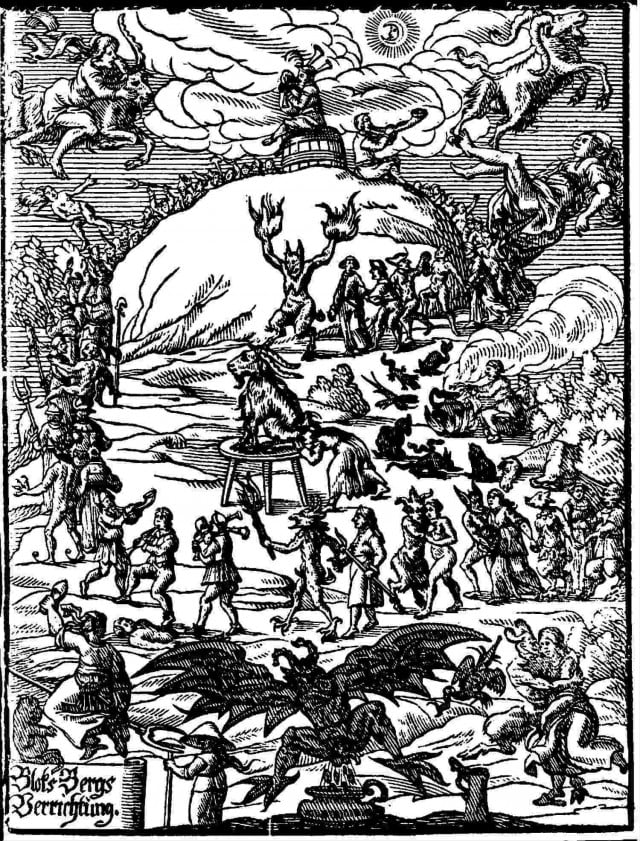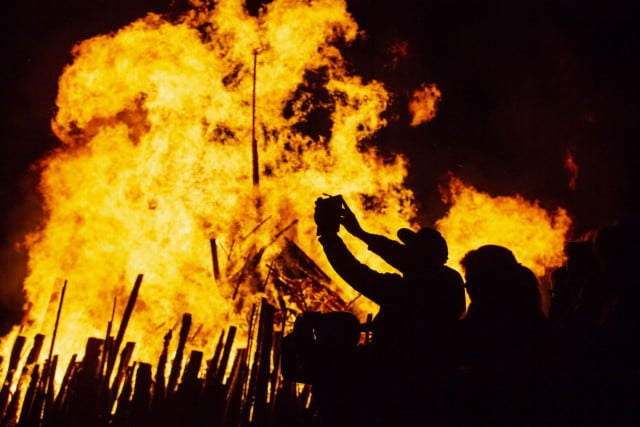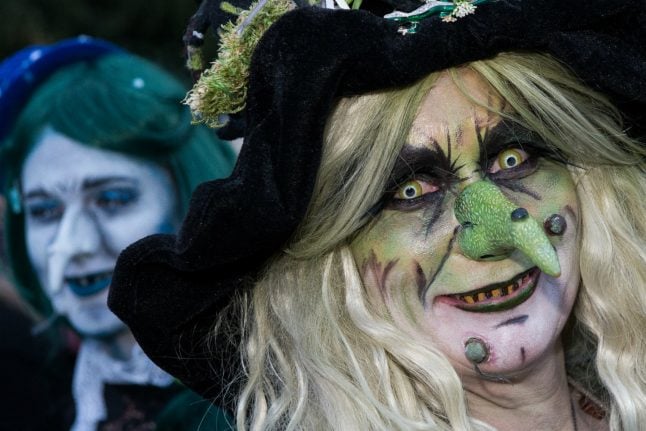Despite this, 'the old ways’ still do persist in the German popular imagination, most prominently in what we know as Walpurgisnacht – the evening of April 30th.
While it would make a tremendous name for a snaggle-toothed crone, 'Walpurgis’ actually refers to a medieval saint – Walpurga – with a reputation for putting an end to pagan sorcery, in her career as a butt-kicking 8th century head of an abbey of nuns. Her feast day falls on the 1st of May, and so Walpurgisnacht should really be read as 'St Walpurga's Eve’.
The night is also sometimes known as Hexenbrennen – the burning of witches.
SEE ALSO: Germany's most bizarre May 1st traditions
Despite the best efforts of the Catholic Church to put an end to pagan belief throughout the Holy Roman Empire during the Middle Ages, there were still many aspects of folk beliefs that manifested themselves – from herbalism to rituals designed to ensure a good harvest.
This was especially true in the more wild, remote parts, such as the Harz Mountains, in the northern half of modern Germany.
Over the course of the 16th and 17th centuries, this reputation as a bastion of pagan superstition, coupled with the growing hysteria around witchcraft led many to believe that the Brocken, the highest peak in the Harz Mountains was the scene of 'Witches' Sabbaths’.
These were, allegedly, wild and orgiastic convocations where gathered witches would meet with Satan and plot all sorts of trouble over the coming year.
 17th century depiction of ‘Witches' Sabbath’ by Johannes Praetorius, 1668. Picture: Wikicommons.
17th century depiction of ‘Witches' Sabbath’ by Johannes Praetorius, 1668. Picture: Wikicommons.
In order to keep witches away and avoid their curses, local villagers would come together and light bonfires – a throwback to older beliefs about the warding power of flame. It was a night to stay within the light and heat of the flames for fear of attracting malign attention.
A place of pilgrimage
During the 18th century, and into the Romantic era of the early 19th century, as superstition was replaced by a belief in the scientific, these beliefs were reworked into poetry, art and literature by luminaries such as Goethe, in his play 'Faust’.
Rather than a place to be feared, the Brocken became a place of pilgrimage, where libertines and the curious would gather and carouse around bonfires. Far from keeping witches away, the festivities began to celebrate the witch as a kind of fairytale succubus, with all that entails.
In the 21st century, Walpurgisnacht is both a beloved local tradition and a huge tourist draw throughout the Harz Mountains.
 A fire for Walpurgisnacht in Erfurt, Thuringia in 2018. Photo: DPA
A fire for Walpurgisnacht in Erfurt, Thuringia in 2018. Photo: DPA
Villages and towns near to the Brocken such as Thale and Goslar are filled with thousands of partying guests, who carouse around bonfires.
Thousands more head up the mountain towards the summit, and indeed, viewed from a distance, parts of the mountainside can be an unearthly, tremendous sight.
If a night of dancing flames, flowing beer and questionable romantic decisions atop a looming mountain range sounds like something you're into for 2020, our advice is to start researching now, and book accommodation well ahead.
The festivities are a much-loved ritual for many, with lots of revellars re-booking for the following year the morning after.
DISCOVER: Walpurgisnacht in the Harz region



 Please whitelist us to continue reading.
Please whitelist us to continue reading.
Member comments